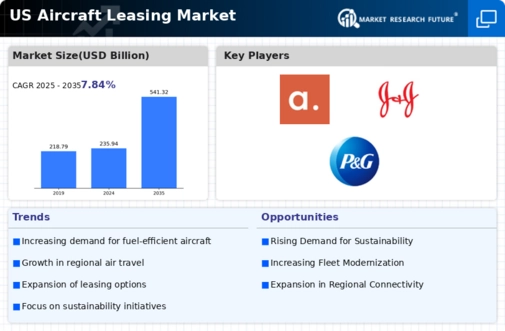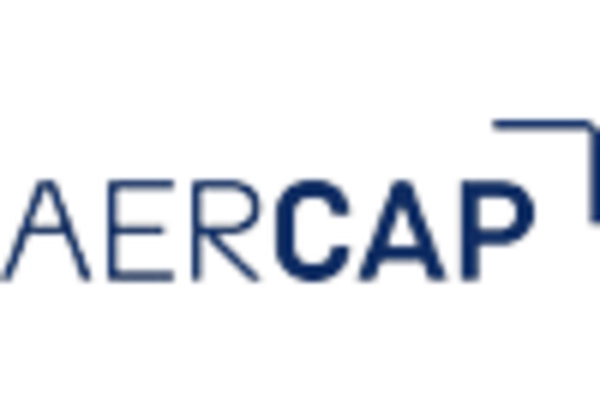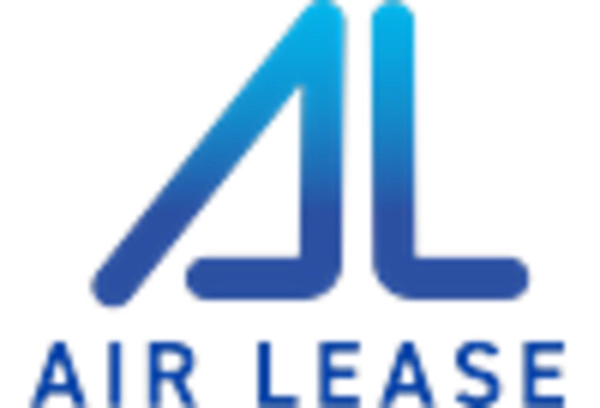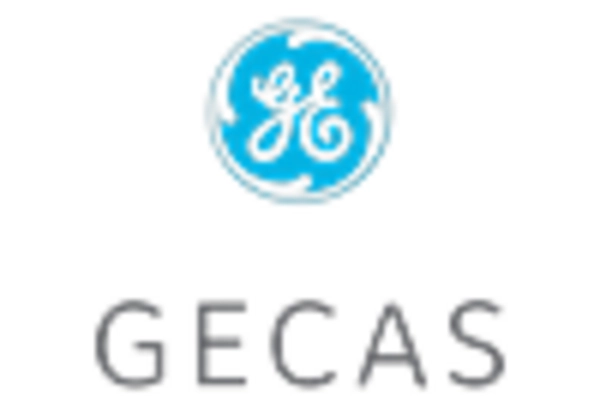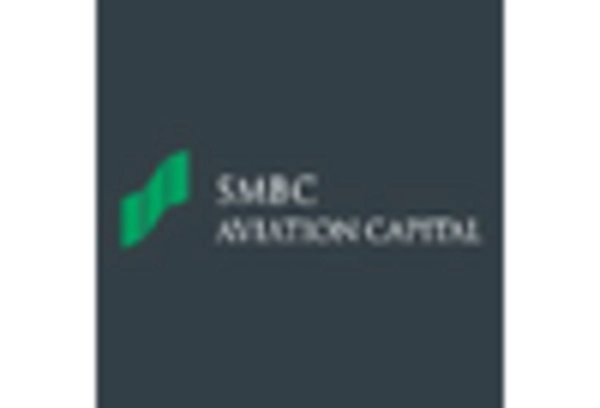Growing Air Travel Demand
The US Aircraft Leasing Market is experiencing a notable surge in demand for air travel, driven by a recovering economy and increasing consumer confidence. According to the Federal Aviation Administration, passenger enplanements in the US are projected to reach 1.1 billion by 2026, indicating a robust growth trajectory. This rising demand for air travel compels airlines to expand their fleets, often opting for leasing as a cost-effective solution. Leasing allows airlines to acquire newer, more fuel-efficient aircraft without the substantial capital outlay associated with purchasing. Consequently, this trend is likely to bolster the aircraft leasing sector, as airlines seek to meet the growing passenger demand while managing operational costs effectively.
Regulatory Support for Leasing
The US Aircraft Leasing Market benefits from a favorable regulatory environment that encourages leasing as a viable financing option. The Internal Revenue Service provides tax incentives for lessors, which can enhance the attractiveness of leasing arrangements for airlines. Additionally, the Federal Aviation Administration has established guidelines that facilitate the leasing process, ensuring compliance and safety standards are met. This regulatory support not only simplifies the leasing process but also instills confidence among potential lessees. As a result, airlines are more inclined to engage in leasing agreements, thereby driving growth in the aircraft leasing market. The combination of tax benefits and streamlined regulations positions leasing as a preferred choice for many US airlines.
Shift Towards Sustainable Aviation
The US Aircraft Leasing Market is increasingly influenced by the shift towards sustainable aviation practices. Airlines are under pressure to reduce their carbon footprints and comply with environmental regulations. This has led to a growing interest in leasing newer, more fuel-efficient aircraft that meet stringent emissions standards. According to the Environmental Protection Agency, the aviation sector is expected to reduce greenhouse gas emissions by 50% by 2050. Leasing provides airlines with the flexibility to upgrade their fleets to more sustainable options without the long-term commitment of purchasing. This trend not only aligns with global sustainability goals but also positions leasing as a strategic choice for airlines aiming to enhance their environmental performance.
Increased Competition Among Lessors
The US Aircraft Leasing Market is characterized by heightened competition among lessors, which is driving innovation and improving service offerings. As new entrants join the market, established lessors are compelled to enhance their value propositions to retain clients. This competitive landscape encourages lessors to offer more flexible leasing terms, competitive pricing, and tailored solutions to meet the diverse needs of airlines. Furthermore, the presence of multiple players fosters a dynamic environment where airlines can negotiate better deals, ultimately benefiting the overall market. As competition intensifies, the US aircraft leasing sector is likely to witness increased activity, with airlines capitalizing on favorable leasing conditions to expand their fleets.
Technological Advancements in Fleet Management
The US Aircraft Leasing Market is witnessing a transformation due to advancements in fleet management technologies. Innovations such as predictive maintenance, real-time tracking, and data analytics are enabling lessors and airlines to optimize aircraft utilization and reduce operational costs. For instance, the integration of Internet of Things (IoT) technologies allows for better monitoring of aircraft performance, leading to timely maintenance and improved safety. This technological evolution not only enhances the efficiency of leased aircraft but also appeals to airlines looking to maximize their operational capabilities. As airlines increasingly adopt these technologies, the demand for leased aircraft equipped with advanced systems is likely to rise, further propelling the growth of the aircraft leasing market.


